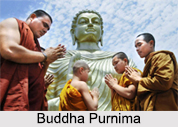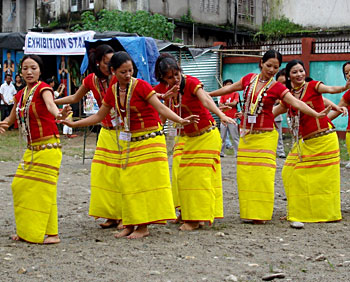Rosh Hashanah is a New Year Day celebrated by Jews. This falls on the first day of the seventh month of Tishri, in commemoration of the agricultural life of ancient Jewry when the year began with the first month of the autumn. It is not a day of rejoicing but one of solemnity and soul-searching when Jews stand before God`s judgment seat and the pious prepare for it, by a daily fast from morning to evening for 30 days preceding. It is inaugurated by the kindling of festive lights in the home and in the synagogue. A special blessing is recited.
 Rosh Hashanah marks the advent of the High Holidays and introduces the annual Ten Days of Penitence or Days of Awe. Most of the festival is spent in self-examination through congregational prayers in the synagogues. Rosh Hashannah has a number of additions to the regular service, most notably an extended repetition of the Amidah prayer for both Shacharit and Mussaf. The Shofar is blown during Mussaf at several intervals, except when the first day falls on the Sabbath (Saturday), in traditional communities every morning for the entire month of Elul, the month preceding Rosh Hashanah. The sound of the shofar is intended to awaken the listener from his or her "slumber" and alert them to the coming judgment.
Rosh Hashanah marks the advent of the High Holidays and introduces the annual Ten Days of Penitence or Days of Awe. Most of the festival is spent in self-examination through congregational prayers in the synagogues. Rosh Hashannah has a number of additions to the regular service, most notably an extended repetition of the Amidah prayer for both Shacharit and Mussaf. The Shofar is blown during Mussaf at several intervals, except when the first day falls on the Sabbath (Saturday), in traditional communities every morning for the entire month of Elul, the month preceding Rosh Hashanah. The sound of the shofar is intended to awaken the listener from his or her "slumber" and alert them to the coming judgment.
 During the afternoon of the first day occurs the practice of Tashlikh, in which prayers are recited individually, near natural flowing water, since It is said that into this water the sins are symbolically cast and it thus, it expresses the hope that `God will cast all your sins in the depths of the sea` i.e., by repentance. Many also have the custom to throw bread or pebbles into the water, to symbolize the "casting off" of sins. In some communities, if the first day of Rosh Hashanah occurs on Shabbat tashlikh is postponed to the second day.
During the afternoon of the first day occurs the practice of Tashlikh, in which prayers are recited individually, near natural flowing water, since It is said that into this water the sins are symbolically cast and it thus, it expresses the hope that `God will cast all your sins in the depths of the sea` i.e., by repentance. Many also have the custom to throw bread or pebbles into the water, to symbolize the "casting off" of sins. In some communities, if the first day of Rosh Hashanah occurs on Shabbat tashlikh is postponed to the second day.
Rosh Hashanah laws and customs governing observance meals often include apples and honey, thus, the festival includes, dipping of bread used for the benediction and also of pieces of apple in honey. This expresses the Jewish hope that the coming year will be a sweet one. They also eat carrots, which is a symbol of fertility and leadership. Various  other foods with a symbolic meaning may be served, depending on local (custom), such as tongue or other meat from the head (to symbolise the "head" of the year). Other symbolic foods are dates, black-eyed beans, leek, spinach and gourd, all of which are mentioned in the Talmud. Pomegranates are used in many traditions: the use of apples and honey is a late medieval Ashkenazi addition, though it is now almost universally accepted. Typically, round challah bread is served, to symbolize the cycle of the year. On the second night, new fruits are served to warrant inclusion of the shehecheyanu blessing, the saying of which would otherwise be doubtful (as the second day is part of the "long day" mentioned above).
other foods with a symbolic meaning may be served, depending on local (custom), such as tongue or other meat from the head (to symbolise the "head" of the year). Other symbolic foods are dates, black-eyed beans, leek, spinach and gourd, all of which are mentioned in the Talmud. Pomegranates are used in many traditions: the use of apples and honey is a late medieval Ashkenazi addition, though it is now almost universally accepted. Typically, round challah bread is served, to symbolize the cycle of the year. On the second night, new fruits are served to warrant inclusion of the shehecheyanu blessing, the saying of which would otherwise be doubtful (as the second day is part of the "long day" mentioned above).
The traditional greeting on Rosh Hashanah is "Shana Tova"(Hebrew) for "A Good Year," or "Shana Tova Umetukah" for "A Good and Sweet Year." Because Jews are being judged by God for the coming year, a longer greeting translates as "May You Be Written and Sealed for a Good Year" (ketiva ve-chatima tovah). In modern times, people also send New Year cards with the greeting `Le-shana tova tikhtevu` (May you be inscribed in the Book of Life for a happy New Year).



















